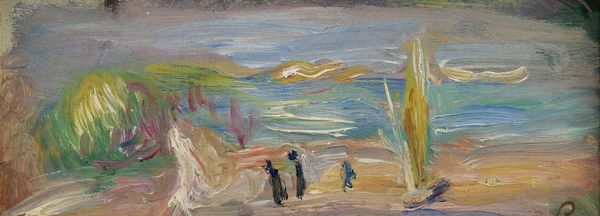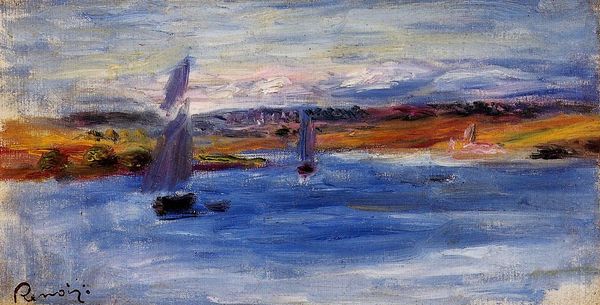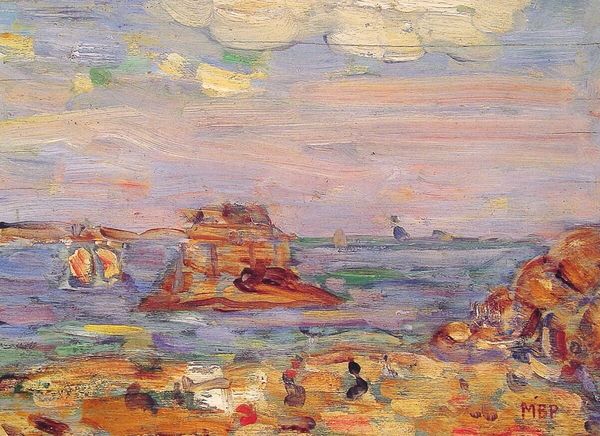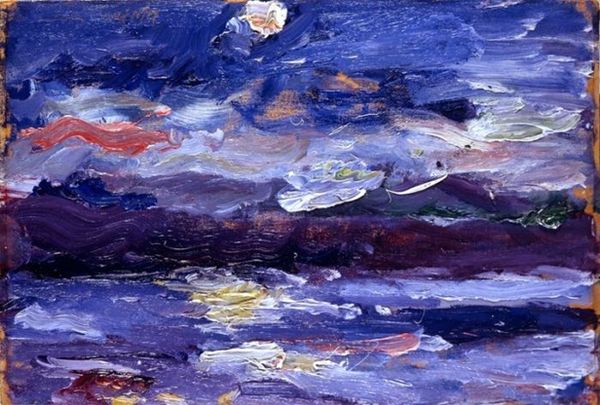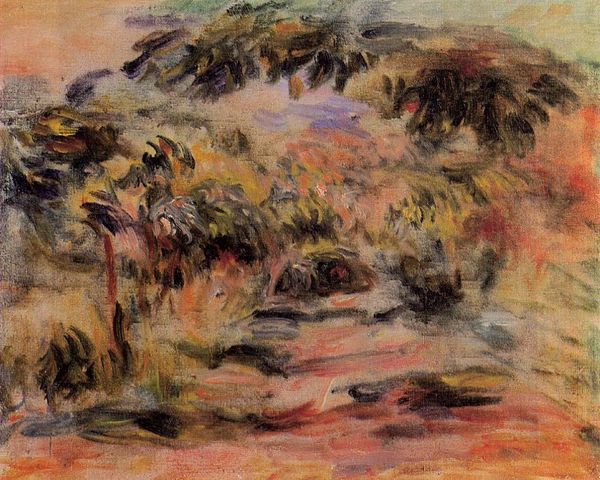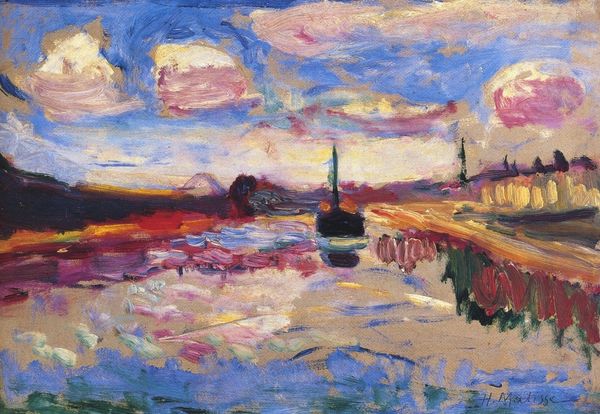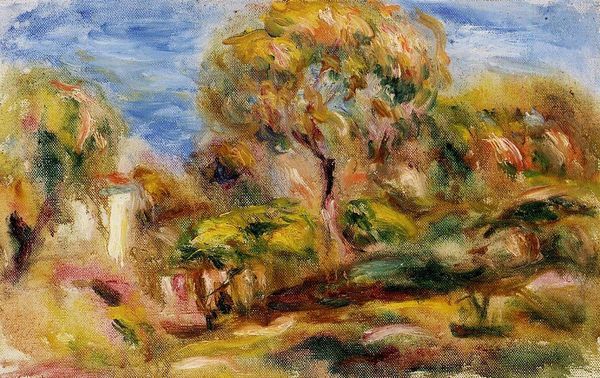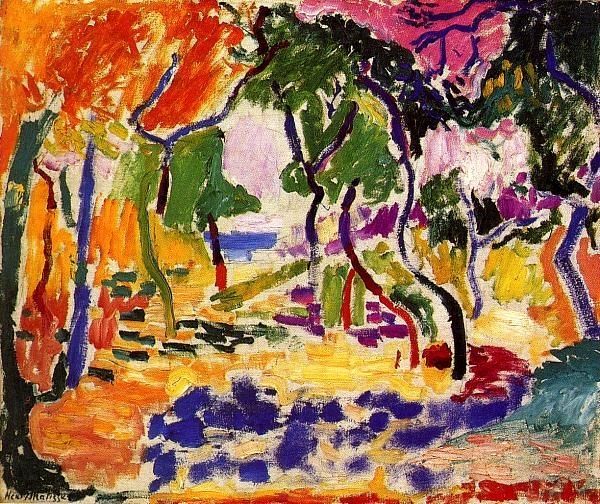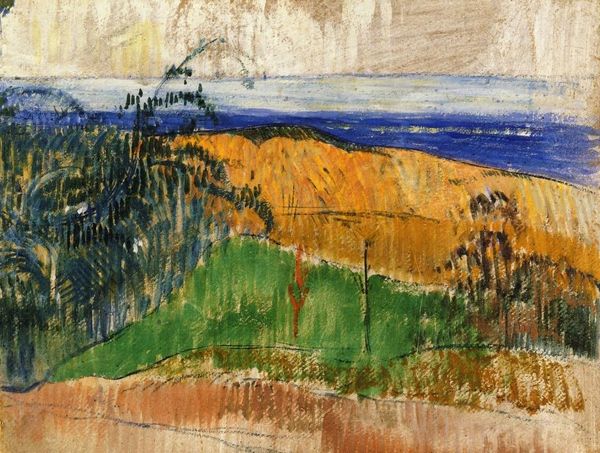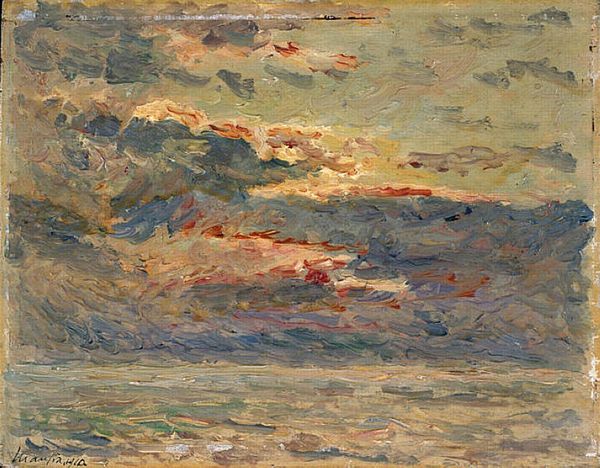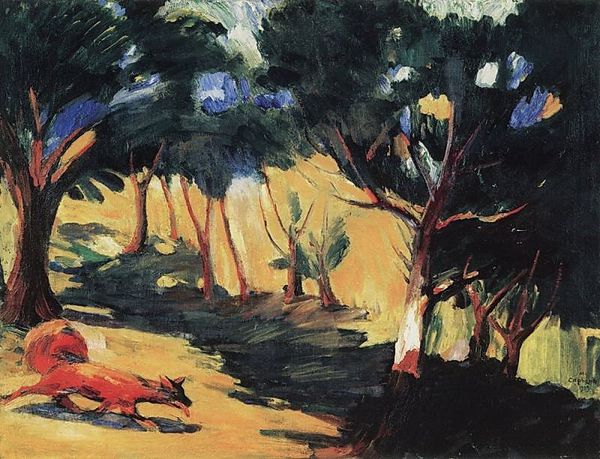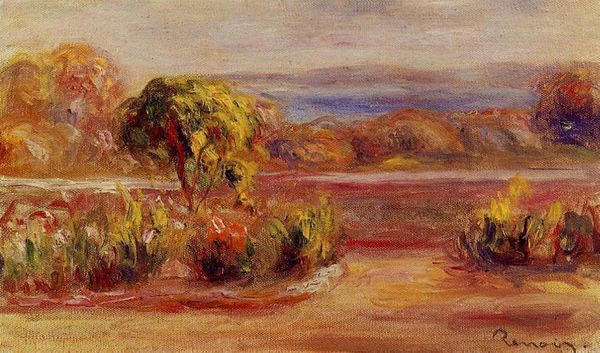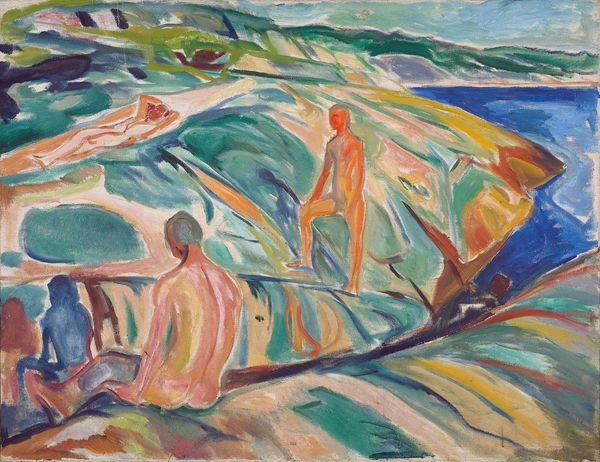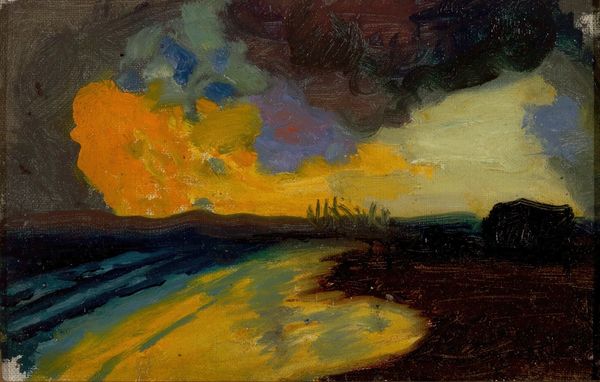
Copyright: Public domain
Curator: Renoir's "Lighthouse and Fort Carre Antibes," painted in 1916, captures the Mediterranean landscape in his signature impressionistic style. Editor: It's dreamy. The soft palette almost dissolves the fort and lighthouse into the sky; there is a hazy luminescence. Curator: Right, Renoir favored plein-air painting at this stage in his career, focusing intensely on how light interacts with color and form. One could argue that the physical labor itself--working outdoors, transporting his materials—became integral to his process. Editor: I am struck by the sociopolitical context—World War I was raging during 1916, and Renoir painted this idyllic scene far from the front. But how much did the shadow of war truly stay afar? This serene, perhaps even escapist, imagery can be interpreted as a reaction to those times of violence. Curator: That's interesting. For me, what’s compelling is Renoir’s almost nonchalant brushwork. See how the paint is applied in short, broken strokes? He is capturing the momentary effects of light rather than meticulously rendering architectural details. Editor: And there's an element of gender politics, too. The figures in the foreground seem to be women and children. Consider the historical construction of women as symbols of peace and domesticity, especially when juxtaposed with the distant yet symbolic fort and lighthouse that speak to patriarchal power. Curator: That is definitely something to consider. Now, the choice of oil on canvas – a readily available and transportable material – underscores the portability of his artistic practice at this stage, not forgetting its industrial availability that enabled Renoir to get back to the site daily and concentrate his vision on the same views again and again. Editor: We cannot ignore how he filters his observations, crafting an appealing representation of the location rather than documenting stark reality. As we unpack the scene's complexities, the symbolism, social concerns, and historical context enrich our experience of this artwork. Curator: Indeed. Analyzing Renoir's materiality, in concert with these considerations, has definitely added more nuance to our interpretation. Editor: It makes us consider how much any landscape hides the world and history we might wish it to show.
Comments
No comments
Be the first to comment and join the conversation on the ultimate creative platform.
